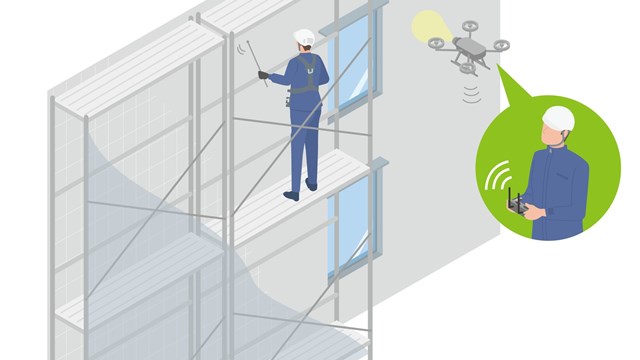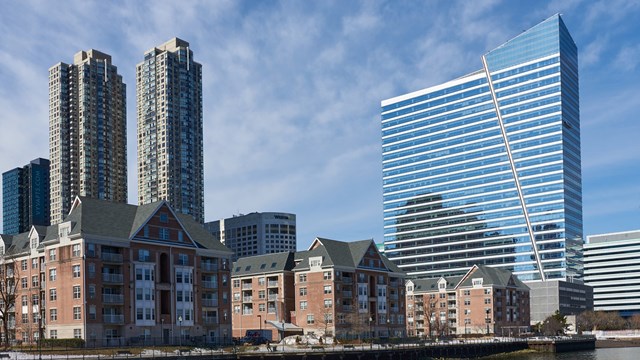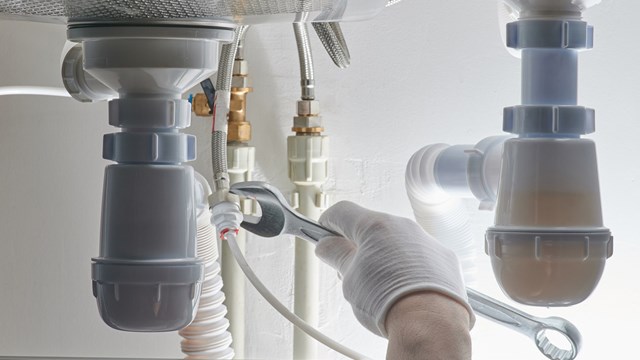
Edgar Dworsky is the treasurer of a small condo complex in Somerville, Massachusetts that was built back in 1987. He loves where he lives except for one rather large problem. Water leaks have plagued the complex since it was built. During driving rains, water comes in from around the windows and near the chimney. The association has tried numerous solutions to fix the problem, but nothing has worked very well.
“Water problems are completely frustrating and expensive to try to fix,” says Dworsky.
Water leaks are one of the most damaging things that can happen to a condo, whether in the units or on the common property—especially if, like Dworsky’s complex, they are stealthy leaks that are hard to detect. Among other things, the leaks can be caused from a poorly-constructed building, old pipes, poorly-maintained valves, and damage caused by other factors such as storms. “Everybody that we’ve had in here has told us where they think it’s coming from, and every person has been different, but nobody has been right,” says Dworsky.
Water, Water, Wherefore Art Thou?
Although Dworsky’s building problems seems to have started at the construction phase, Russell Fernandes, principal and vice president of Becht Engineering, BT, Inc in Liberty Corner, New Jersey, says that roofs and siding or façade leaks can develop at any time in a building’s life span.
“Pipes begin to deteriorate in the 20- to 30-year range of a building’s life,” says Fernandes. “This is particularly troublesome in high-rise buildings with large riser pipes—the pipes that run from basement to top floor, inside walls—to supply everything from hot and cold domestic water to air conditioning and heating.”
Fernandes explains that there are three main causes for water leaks in buildings—a water leak in the building envelope, which is the roof, walls and windows; a foundation leak from ground water; or a leak from a plumbing system, whether it’s fresh water or sanitary sewer drain lines.
Water leaking around a window is usually coming from the flashing and/or intersection with the exterior siding system. Flashing is the thin layer of waterproof material that keeps water from getting into the building at the joints between perpendicular surfaces.
“Downspouts that are not functioning properly can also result in foundation leaks into basements and crawl spaces,” Fernandes continues. “Roof water should be directed as far away from the foundation as possible. Downspouts should either discharge on splash blocks to direct roof water away from a building’s foundation or even better, into an underground drainage system connected to the municipal storm water system.”
Of course, the most obvious sign of a leak is visible water, but there may be other indications, according to Thomas Roman, president of Quality First Basements in Perth Amboy. “Above ground, you look for water infiltration in your home—visible drips. The telltale signs of water infiltration will be staining on the ceilings or walls. You also could have some mold issues in the wall cavity, which will show up on the outside Sheetrock or wall. You may have a general damp or smell in your home. Anyone of those things will be attributed to water. And it can start anywhere, from the roof, the shingles, flashings, the joints between the wall and the roof to the interior leaks. No two leaks are the same.”
Hunting it Down
So you see signs of water, staining or mold, but where exactly is it coming from? Unfortunately, leak-hunting isn't always an exact science. According to waterproofing professionals, each one is sort of a puzzle, and every building is different, so hunting them down takes someone with a lot of experience, who understands the construction of the building. Different types of construction exhibit different leaks in different ways, so an experienced eye is needed to find it and make it stop.
“We start at the point where they saw the water and work our way backwards to locate the source of the leak,” says Roman. “So, if you have a stain in the middle of your ceiling on the second floor, we would obviously start there, and do an interior inspection. And then, if possible, do an inspection of the area above it, which in some case would be the attic or the next floor up. From that point, we then do an outside inspection. And usually, you can locate the problem from that point.”
There are some technologies that can help you determine the problem, including infrared cameras, moisture meters and fiber optic video cameras. However, it’s best to leave the more elaborate equipment, such as cameras and moisture meters, to the professionals.
Thermal imaging cameras are another tool used to defeat leaks. Every object emits heat radiation, and the camera picks up that radiation. The sensor in the camera then converts the radiation into a thermal image so you can see if there is water. “An infrared camera allows the user to see into a wall and find wet insulation and other materials,” says Fernandes. “This is possible because wet building materials will have different thermal characteristics than those same materials when dry. For example, dry wall insulation in an exterior will return to fairly close to ambient temperature fairly quickly once the sun stops shining on the wall. However, wet insulation will retain some of the heat longer, which will show up as a “hot” spot with an infrared camera.”
“We call it forensic leak detection,” says Roman. “We also have a moisture meter technology where we set probes into the wall that detect changes in the moisture levels in the wall which in turn help us locate the sources and locations of the leak.”
Pipes in walls and underground surfaces can also be scanned with fiber optic video cameras that can be fed into a piping system from one end, allowing a complete inspection of the pipes from the inside.
Equal-Opportunity Leaks
While it might seem like older buildngs are the ones most prone to leaks and water damage, that's not necessarily so.
“Old buildings can take a lot of abuse,” says one waterproofing pro. “They may not look so great on the outside, and mortar joints might be chipped or missing, but they may not necessarily leak. On the other hand, newer buildings that have a lot of these designed flashing systems behind the walls weren't built properly. Or shortcuts were taken, and we find that there are more problems with newer buildings built from say the late 1980's or early 90's until now than on the older structures.”
“Newer condos have window leaks and roof leaks,” says Roman. “And those can usually be attributed to an improperly installed roof or windows. They may appear to be installed properly, but the paper or the flashing is lapped the wrong way and doesn't hold up under the stress of years of service. They're normally simple repairs, but only when you know what you're looking for.”
“In the 10-year-old condos, you start to get to the point where roof leaks are big,” Roman continues. “From five to 10 years, you're usually in pretty good shape in a condo; you've gotten over your hump of the initial improperly installed stuff and the building materials aren't at the end of their usable life. At 20 years, now things are starting to wear out. The roof and shingles are wearing. The flashing, the wood siding, things are starting to open up and allow water to come in. The better your maintenance over the years, the longer that shelf life grows. But once you hit the 20-year mark, you're hitting the end of the usable life of many of these elements.”
No matter how big or small, new or old, every leak should be fixed or it can become more costly in the long run. A small leak can even cost you more money and more water over time than a large leak, because it’s been going on for longer, reducing your water pressure and letting H2O just trickle away. “So, if you have a leak and you detect it, report it, and have it repaired immediately and properly,” Roman continues, “chances are you're not going to have any residual problems. Nowadays, we basically have the ability to look almost into the wall cavity without destroying the wall. In the old days, you'd just cut the Sheetrock out of the wall. Technology makes our job a little bit easier now, but at the end of the day, it's still old school construction knowledge, and knowing how to do things in the proper way.”
The takeaway from all this, say the professionals, is that it always pays to solve a leak, because they tend to only get worse over time—and that costs everyone not just money, but peace-of-mind as well.
Lisa Iannucci is a freelance writer and a frequent contributor to the New Jersey Cooperator.






Leave a Comment